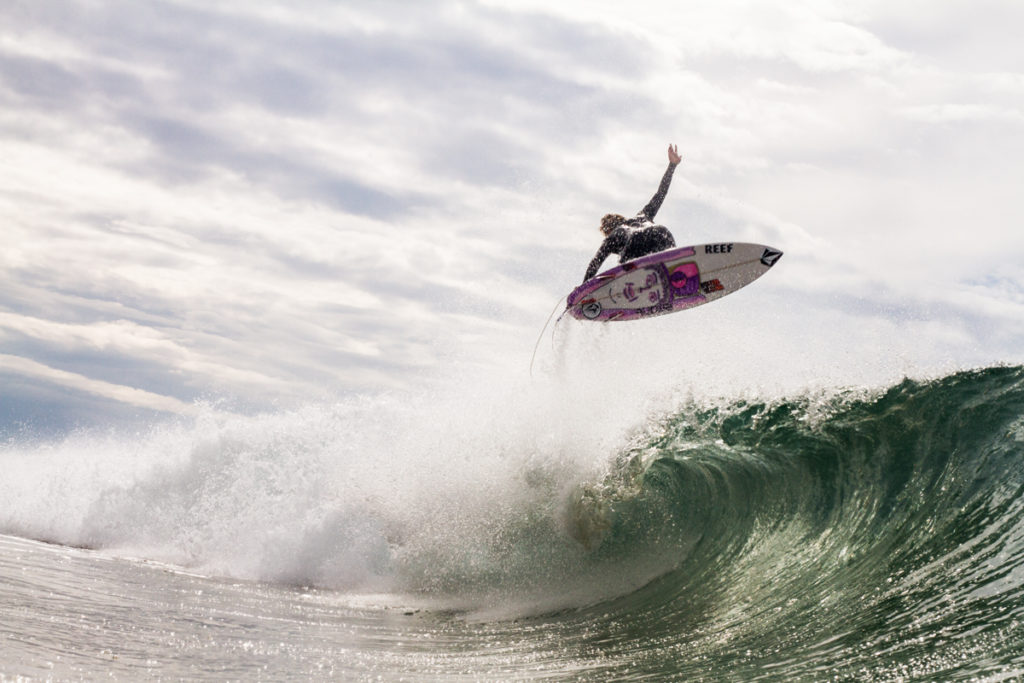Buy Now, Pay Later

Free Surfboard Advice
Customer Service 9am - 5pm (UK)
Trusted by Pyzel

The beach resort of Nazaré in Portugal used to be almost deserted in winter – but now it’s the global centre of big wave surfing. Pro-surfer Garrett McNamara has put the former fishing village on the map, chronicling its transformation in the 2021 documentary, 100 Foot Wave.
Garrett, the eight-time Guinness World Record holder for the largest wave ever surfed, is credited with turning Nazaré into a world-famous surfing destination. Attracting big wave surfers from across the planet and thousands of spectators; its skyscraper-sized waves are created by Europe’s largest underwater canyon.
The documented television series followed Garrett as he travelled to Nazaré with the goal of conquering a 100 ft wave. The Massachusetts-born surfer was 43 when he first arrived in Portugal in 2010, after fellow big wave surfers had been trying to master the monster waves since 2004.
Before the eyes of the world’s surfing community focused on Nazaré, it was a beach resort used mainly by locals, with a few tourists stopping off at the rugged cliffs overlooking North Beach to pose for photos with its 16th-century fort and red lighthouse.
Local surfers had always known their waves were big, but had no idea of their true magnitude. They would surf to a point, but no one tackled the skyscraper-sized waves that came in with the big swells. They didn’t believe it was possible.
In 2004, a group of out-of-town big wave surfers descended on Nazaré to check out the giant waves, but after 90 minutes, they ended their mission. The waves were way too big to paddle surf and there was no funding available to buy the jet skis required to tackle waves of that size.
Scientists at the Portuguese Hydrographic Institute had been studying the geological anomaly on their doorstep, a massive underwater canyon, since 1960. However, local government officials didn’t capitalise on it as a tourist attraction until 2008.
Nazaré had been a fishing port and summer holiday spot for Portuguese tourists for generations, but it became a ghost town from the end of August onwards until the following summer season. As the fishing industry declined, officials were trying to find ways of attracting more visitors. The idea was to lure people to the port outside the summer months.
Initially, it wasn’t about winning the respect of the big wave surfing community, according to lifeguard and physical education teacher Paulo Salvador, who was involved in the meetings at the city hall.
The size of the waves at Nazaré is due to the submarine canyon measuring 200 km long and 5 km deep. The continental shelf splits the waves into two. In the shallower area, the speed of the wave reduces, but inside the canyon, it maintains the higher speed it gathered in the deep ocean. When the two collide, it creates one giant wave, impacting the currents near the shore and causing a second amplification.
It took two years to win funding for the surfing project. Finally, in 2010, Garrett arrived in Nazaré, where he met Salvador, who was in charge of safety. It took Garrett just a few days to realise that with the right equipment, Nazaré’s giant waves could be surfed, with the most stringent safety regime in the history of big wave surfing.
A Jet Ski driver deposits the surfer on the wave, while a spotter with a radio keeps the driver informed of the surfer’s location. There is also a second rescuer on a Jet Ski and even a third on days when the waves are particularly big.
Prior to Garrett’s arrival in 2010, the population of Nazaré was just 15,000 inhabitants in winter. Now, with the historic fort turned into a surfing museum in 2014, focusing on the monster waves, around one million tourists have visited the resort, with 350,000 visiting in the summer of 2019 alone.
TV documentary, 100 Foot Wave, chronicles Garrett’s decade-long pursuit of surfing the largest wave on the planet and the transformation of Nazaré into the world’s most famous big-wave surfing destination.
In 2011, Garrett he broke the world record when he rode a 78 ft wave at Nazaré. In January 2013, he broke his own world record by surfing an estimated 100 ft wave off the coast of Nazaré.
Before surfing at Nazaré, he said there was “no wave too big” and he was “always looking for bigger and bigger”. Describing the giant wave, he said, “It stands up so tall, I found what I’d been looking for, for so many years.”
He used boards custom-designed by Mercedes-Benz during the big storm of 2013 to ride the massive waves of Nazaré at 62.4 km per hour. He famously uses a custom-made Mercedes-Benz surfboard made entirely from Portuguese cork as part of the motor manufacturer’s M-Board project.
When Garrett first started surfing, he used a second-hand 12 ft surfboard. As a youth, he tried to make a living out of standard shortboard surfing, but shifted to tow-in surfing in the mid-1990s.
Despite having achieved his dream of surfing a 100 ft wave, Garrett still gets the same thrill from surfing. He says, “I’m hoping to be able to keep surfing as long as I’m alive.”
© 2024 Ocean Magic – The Factory. All rights reserved. Company Number: 04664716. VAT Registered 807 8508 12

Get 10% off your first order!
Join the Lineup!